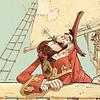Take a photo of a barcode or cover
Reviews tagging 'Rape'
Monsters: What do we do with great art by bad people? by Claire Dederer
116 reviews
There are several stand out chapters in the first half (most of which feature in part an artist who has done a monstrous thing) that I found gave me a new perspective and ideas to futher reflect on. Dederer spends a lot of this first half on society's reactions to an artist's crimes, from the fans to the critics (mainly herself) and gets across that to the audience it is far more emotional than logical when it comes to dealing with work you love being tainted by the artist's crimes. It was quite an enjoyable read throughout this part (the section which she discusses people using the excuse "they didn't know any better" in regards to monsterous artists of the past, using Richard Wagner as an example, was really eye opening to me).
I think the biggest problem with the second half of the book is made prominent with the chapter "Am I a Monster?", where Dederer makes this too autobiographical by asking herself if she is as bad as the artists featured in the previous chapters. It isn't the first instant of her adding her own biography into the book (she does state that one's own feelings on these issues effects their opinions on the artists) but here it just makes it so that she appears to think that her alcoholism makes her just as bad as the rapists, pedophiles and murders. This is where the book falls too far into an uninteresting memoir that did not engage with me and the conflation only continues from there.
There is also something quite irksome about her chapter "Abandoning Mothers", where she states that "If the male crime is rape, the female crime is the failure to nuture. The abandonment of children is the worst thing a woman can do". The problem is, there is a long list of women artists who have done far more horrific things, to children and others, than to abandon. It really felt like she didn't really try to find monstrous women (with the execption of J K Rowling, Virignia Woolf & Valerie Solanas) and her statement of a "failure to nuture" just seems sexist. I was unsure if she meant it in terms of what society deems the worst thing a woman can do, but throughout the chapter she writes about her own experiences with motherhood and how she sees abandonment as terrible (which it is but again, the worst thing?).
This isn't a completely valueless book, but by it's conclusion I find that it's a bit of a cop-out, where Dederer, by weaving her memoir through the book, tries to assuage her guilt by basically stating that there's no ethical consumption under capitalism and that we can't help what we love so we should just enjoy the art. While their is some truth to that, using the "no ethical consumption under capitalism" argument just removes all responsibility from the audience. Yes, we did not commit these horrid acts but should that mean we should still support the artists if they are continuing to hurt others or avoid consequences for their actions? Shouldn't we mitigate harm instead? Buy art second hand e.t.c.?
We can still enjoy said art and critique it. However, instead of ending it with nuance, Dederer ends it with very little. One size fits all.
Graphic: Domestic abuse, Pedophilia, Rape
Moderate: Alcoholism, Child abuse, Sexual assault
Minor: Addiction, Adult/minor relationship, Abandonment
Minor: Alcoholism, Child abuse, Domestic abuse, Rape, Sexual assault, Suicide
Moderate: Alcoholism, Pedophilia, Racism, Rape, Sexism, Antisemitism, Grief
Graphic: Alcoholism, Homophobia, Rape, Suicide
Moderate: Sexism, Toxic relationship
I think my challenge with this book is that Dederer wasn't sure where she was going with it. Part of it reads like a series of critical essays around how we address art created by artists who are, at their core, bad people. Can we still love their art? Where do we draw the line? Other parts of it read as a memoir from Dederer about her own connections to media and the #MeToo movement. Unfortunately, I wasn't super interested in Dederer's personal experiences, and the parts where she focused on herself really just didn't work for me. This book had a lot of potential but ended up falling flat in a lot of parts.
Moderate: Child abuse, Rape, Sexual assault
Graphic: Rape, Sexual violence
Graphic: Child abuse, Rape
Moderate: Suicide
I feel it is important to read this as a memoir as opposed to an essay. While there is analysis and plenty of examples referred to, this reads as a reflection of the author’s own experience with engaging with art created by bad people. Not all the artists are talked about at the same length, and you’ll find that there’s a lot of kinds of monster in here.
I did find some of the examples of female artists confusing. They don’t generally equate to the literal crimes written about for male artists. It does add some balance, though, if this is in here for balance it may have been interesting to explore queer examples too.
I really enjoyed this, and I liked the conclusion it came too. It definitely encouraged me to think more about the parasocial relationships with artists, and how we can reconcile this when they’re revealed to be bad people.
Graphic: Child abuse, Rape
Moderate: Adult/minor relationship, Domestic abuse, Drug abuse, Drug use, Mental illness, Self harm, Suicide, Alcohol
Moderate: Addiction, Adult/minor relationship, Alcoholism, Bullying, Child abuse, Homophobia, Infidelity, Misogyny, Pedophilia, Rape, Self harm, Sexism, Sexual assault, Sexual violence, Toxic relationship, Gaslighting
Graphic: Pedophilia, Rape, Suicide
Moderate: Racism, Antisemitism




